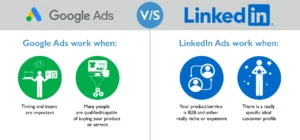Ever felt confused by all the talk around SEO vs. GEO? You’re not alone. In the evolving world of digital marketing, knowing the difference (and the similarities) between the two can make or break your strategy.
In this blog, you’ll walk away with a clear understanding of how SEO and GEO marketing work, how they differ, where they intersect, and how combining both can boost your digital game.
We’ll break down what SEO is, what GEO marketing means, their similarities, key differences, and how to integrate them. Plus, we’ll introduce how SOCIAL MATTERS-best SEO marketing agency in Hyderabad, can help you master both.
WHAT IS SEO?
SEO (Search Engine Optimization) is the process of optimizing your website to improve its visibility on search engines like Google. The goal is to rank higher in search engine result pages (SERPs) and attract organic traffic. SEO includes keyword optimization, content creation, on-page elements, backlinking, technical performance, and more.
For example, if someone searches for “best vegan restaurants,” SEO helps ensure your vegan restaurant website appears on the first page-without paying for ads.
WHAT IS GEO?
GEO marketing, or geolocation-based marketing, focuses on targeting users based on their physical location. It uses GPS, IP addresses, and location data to serve location-specific ads or content.
For instance, a pizza outlet can target ads to users within a 5 km radius around lunchtime. GEO marketing often uses tools like geofencing, location-based notifications, and local mobile ads.
WHAT THEY HAVE IN COMMON?
Though SEO and GEO have different core purposes, they share several important traits:
- User Intent Focus: Both SEO and GEO strategies are designed to meet user intent. SEO matches content to search queries, while GEO marketing matches offers to physical locations.
- Increased Visibility: Whether it’s a high-ranking page or a well-placed local ad, both aim to boost visibility, just through different channels.
- Data-Driven: Both rely heavily on data. SEO uses metrics like keyword rankings, bounce rate, and dwell time, while GEO marketing uses real-time location data, foot traffic, and mobile user behaviors.
- Personalization: GEO uses a user’s location for hyper-targeted ads, while SEO delivers relevant content based on search behavior. Both prioritize personalizing the user experience.
- Local SEO Bridge: GEO marketing and local SEO overlap significantly. Optimizing your business for “near me” searches is a great example of using both strategies together.
INTEGRATING SEO WITH GEO-
Aspect | SEO | GEO Marketing |
| Keyword Optimization | Targeting location based keywords | Targets users in specific geofenced locations |
| Google My Business | Enhances Local visibility | Increases chance of local and ad engagement |
| Mobile optimization | Ensures site ranks well on mobile devices | Uses location data from mobile devices |
| Content Strategy | Blogs or Pages with local relevance | Location-triggered offers and content |
| Customer Reach | Organic reach through SERP’s | Real time reach based on proximity |
IN WHAT WAY ARE THEY DIFFERENT FROM EACH OTHER?
Though SEO and GEO marketing may seem similar in their goals, to reach the right audience they operate on different strategies and serve different purposes. Here’s how they differ:
- Focus Area-
- SEO (Search Engine Optimization) is all about improving your website’s visibility in search engine results. It focuses on keywords, website structure, content quality, backlinks, and more.
- GEO (Geographic Marketing), on the other hand, revolves around reaching users based on their physical location using tools like GPS, IP addresses, and location-based data.
- User Intent-
- SEO taps into search-based intent. You’re targeting users actively looking for something-your service, product, or answer to a query.
- GEO marketing targets location-based intent, such as customers near your store or event who may not be actively searching but could still be interested based on proximity.
3.Tools & Techniques-
- SEO tools include Google Search Console, Ahrefs, SEMrush, etc.
- GEO marketing utilizes tools like geofencing platforms, Google Ads location targeting, mobile app tracking, and more.
- Reach Strategy-
- SEO has a global or broad reach, depending on your keyword targeting.
- GEO marketing is hyper-local, focusing on users within a specific geographic radius or zip code.
- Best Use Case-
- SEO is perfect for online businesses, blogs, e-Commerce stores, and any platform that benefits from organic search traffic.
- GEO is ideal for local shops, event promotions, food outlets, and regional campaigns.
FAQ’s-
1.Can SEO and GEO marketing work together?
–Yes. GEO-targeted keywords can be part of your SEO plan, and location-based content can help improve local rankings.
2. What businesses benefit the most from GEO targeting?
–Restaurants, retail shops, gyms, and event venues-all businesses with a physical location can benefit immensely from GEO marketing.
3. Do I need special tools for GEO marketing?
–Yes. GEO marketing often requires geofencing platforms, mobile ad networks, and access to GPS/location data.
CONCLUSION-
SEO vs GEO may look different at first glance, but both are valuable tools in the marketer’s toolkit. While SEO improves visibility on a global or local level through content and optimization, GEO marketing uses real-time location data to create hyper-targeted experiences.
At, SOCIAL MATTERS-best marketing agency in Hyderabad we provide services starting from SEO, Social Media Marketing, Content creation and marketing, Graphic Designing, Website Development, Photography and Videography and many more. Contact us today!
FOLLOW US ON INSTAGRAM!








